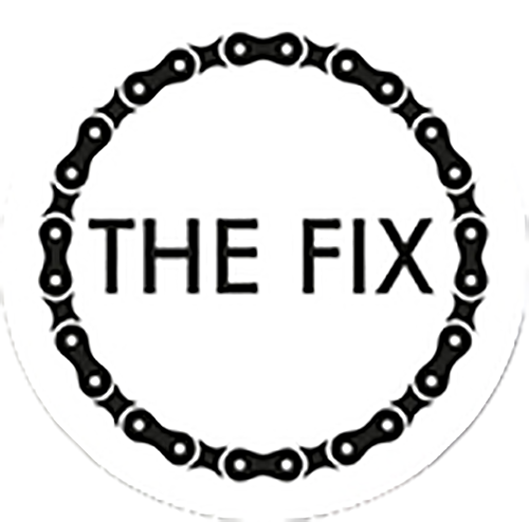
MASTER WHEEL BUILDER | PETE MATTHEWS
In the good old days, wheels were as personal as a tailored suit. You bought them made on site at the shop you purchased your bike from and, if you raced, you had a pair of race wheels made by the local expert. When Quella Ambassador Garrett Turbett took on the Paris-Roubaix challenge he had one request, “Can I use custom wheels built by Pete Matthews to manage the 56km of cobbles?”
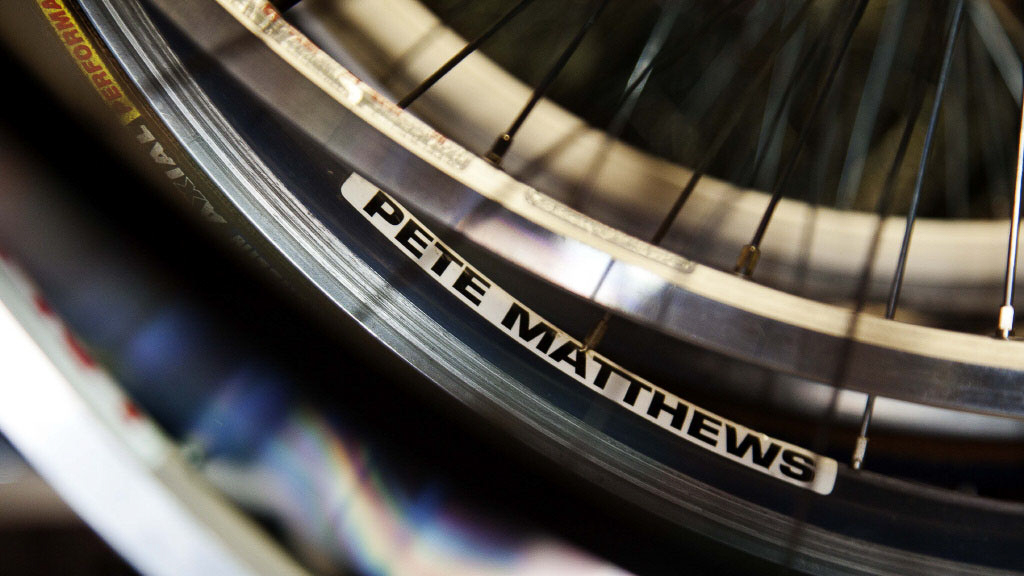 Pete Matthews is based in North Liverpool and is well-known as a master wheel builder. A racing legend in the North West, Pete has won more than 300 races in a 52-year amateur career and 20 national titles – including Amateur National Road Race Champion in 1968.
Through our friends at Spin Cycling Magazine we share their intimate conversation with Pete at his workshop in his hometown of Liverpool.
Why did you start wheel building?
It was a necessity. I’ve always done my own repairs. I started building my own bikes at the age of 14. Almost as soon as I started racing in 1960, I had to start building my own wheels as I was having problems with local shop bought wheels.
What was available in the early 1960s wheel-wise?
It was always pretty restricted in terms of hubs and rims. The serious racing bike shops did Campagnolo hubs with Fiamme rims and 99% of people used those. They were 36 spoke pairs or 32/40 pairs. Wheels did go as low as 28 spoke wheels – but they were seen as time trial wheels. They wouldn’t stay true for jumping about in races. I was only a junior and eight-stone soaking wet. I thought ‘I can get away with a pair of 28’s’, so I ordered them. I remember riding a junior race on Holcombe and was in the break, came around a corner, kicked, and the back wheel disintegrated. One of the guys in the break, Dave Rostrum, who I’m still good mates with now after 50 years, said someone in the break shouted ‘Matthew’s got trouble’ and the whole break put the hammer down and left me. Out on the moors in the rain. That was the end of my 28’s.
Pete Matthews is based in North Liverpool and is well-known as a master wheel builder. A racing legend in the North West, Pete has won more than 300 races in a 52-year amateur career and 20 national titles – including Amateur National Road Race Champion in 1968.
Through our friends at Spin Cycling Magazine we share their intimate conversation with Pete at his workshop in his hometown of Liverpool.
Why did you start wheel building?
It was a necessity. I’ve always done my own repairs. I started building my own bikes at the age of 14. Almost as soon as I started racing in 1960, I had to start building my own wheels as I was having problems with local shop bought wheels.
What was available in the early 1960s wheel-wise?
It was always pretty restricted in terms of hubs and rims. The serious racing bike shops did Campagnolo hubs with Fiamme rims and 99% of people used those. They were 36 spoke pairs or 32/40 pairs. Wheels did go as low as 28 spoke wheels – but they were seen as time trial wheels. They wouldn’t stay true for jumping about in races. I was only a junior and eight-stone soaking wet. I thought ‘I can get away with a pair of 28’s’, so I ordered them. I remember riding a junior race on Holcombe and was in the break, came around a corner, kicked, and the back wheel disintegrated. One of the guys in the break, Dave Rostrum, who I’m still good mates with now after 50 years, said someone in the break shouted ‘Matthew’s got trouble’ and the whole break put the hammer down and left me. Out on the moors in the rain. That was the end of my 28’s.
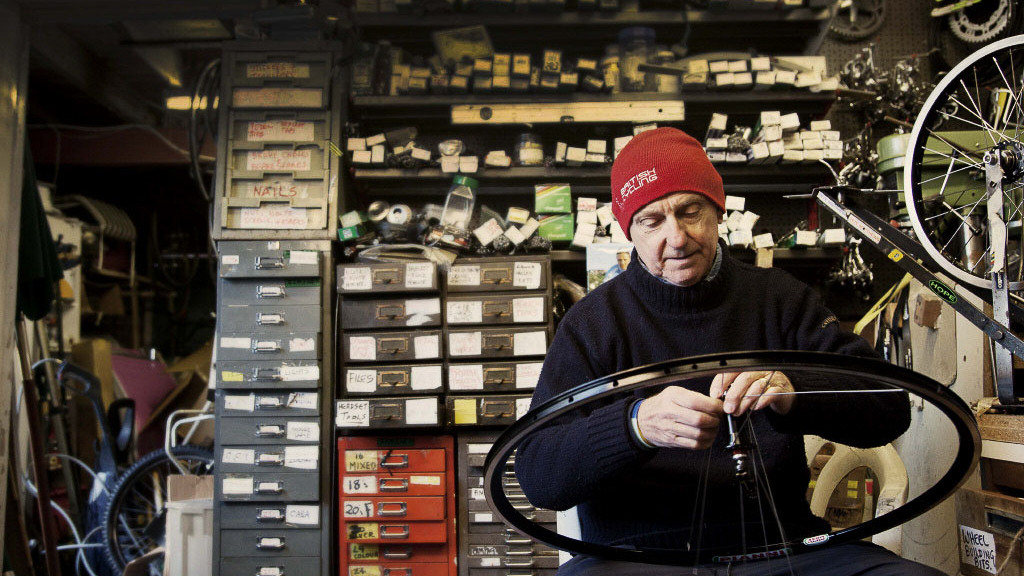 So that’s when you taught yourself?
Well, I couldn’t get wheels fixed on a Saturday night down a shop, so I learnt to do it myself for Sunday morning racing. I made a few mistakes, but there you go. You learned. You were away racing all the time – down south, in Ireland and such like – so it gave you confidence if you could repair your own wheels and true them up. I became sort of a team mechanic, which set me in good stead when I set up the shop.
Then you went to work at Harry Quinn’s shop in Everton Valley?
That was in 1966. I learnt a lot from Harry. He taught me about fork and frame building and I started experimenting with 28 spoke wheels. People would say ‘You can’t use those for racing’ but the ones that I made were turning out fine even for big guys – racing and everything. But as I couldn’t convince everyone, I went further and started making 24 spokes wheels as well. 24 spoke wheels were the lowest spoke count production wheels in those days – only be used for time trial and the track. I wanted to explore the myth that you couldn’t use 24 spoke wheels and below for racing. The only way to do that was to build a pair. It was trial-and-error in one respect, as everyone wanted light alloy spoke nipples. These would sometimes break after three or four years, but people would bring the wheels back to be rebuilt and say they had still run true with a spoke gone, so I knew that I was on the right track. I rebuilt using brass nipples and off they went.
So that’s when you taught yourself?
Well, I couldn’t get wheels fixed on a Saturday night down a shop, so I learnt to do it myself for Sunday morning racing. I made a few mistakes, but there you go. You learned. You were away racing all the time – down south, in Ireland and such like – so it gave you confidence if you could repair your own wheels and true them up. I became sort of a team mechanic, which set me in good stead when I set up the shop.
Then you went to work at Harry Quinn’s shop in Everton Valley?
That was in 1966. I learnt a lot from Harry. He taught me about fork and frame building and I started experimenting with 28 spoke wheels. People would say ‘You can’t use those for racing’ but the ones that I made were turning out fine even for big guys – racing and everything. But as I couldn’t convince everyone, I went further and started making 24 spokes wheels as well. 24 spoke wheels were the lowest spoke count production wheels in those days – only be used for time trial and the track. I wanted to explore the myth that you couldn’t use 24 spoke wheels and below for racing. The only way to do that was to build a pair. It was trial-and-error in one respect, as everyone wanted light alloy spoke nipples. These would sometimes break after three or four years, but people would bring the wheels back to be rebuilt and say they had still run true with a spoke gone, so I knew that I was on the right track. I rebuilt using brass nipples and off they went.
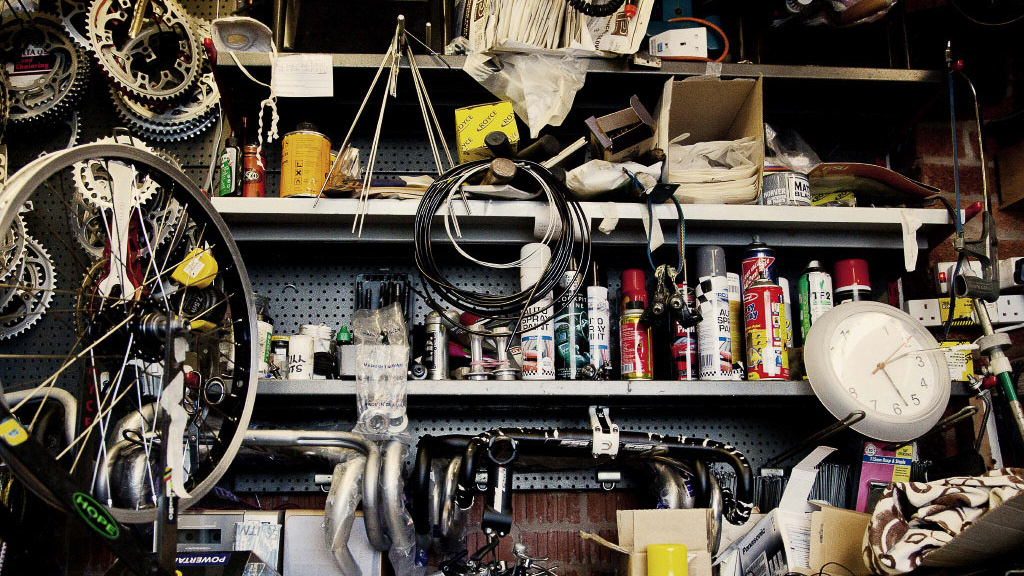 Who’s been your most memorable client?
There have been many however one that stands out for me is Robert Millar.
We were racing in the Isle of Man in our respective races and he asked me to build some especially light wheels for climbing in the Tour. He used my wheels in the late 1980s until he retired. It led to commissions from other riders like Sean Yates, Sid Barras and, more recently, Jeremy Hunt, Michael Hutchinson and Wendy Houvenaghel. I’m still in touch now and again with Robert. He rides motorbikes these days.
What’s changed in wheel building since you started?
Lots, but the main principles and benefits of bespoke wheels remain. I make strong, light and easily repairable wheels. In the old days, any steel frame would take any weight. These days, with tighter tolerances, lighter metals and lug-less welds, more breaks are happening. Wheels are the same. Some of those carbon-spoked, carbon-rimmed wheels are a small fortune to repair – if you can repair them at all. There always been a fixation with equipment weight, but it’s become silly in recent years. I have guys coming to me for wheels saying ‘can you knock 50gms off them to match these production wheels that are £300 dearer’. These are sportive guys who could do with losing a stone or two, so it doesn’t make sense to me. I have a pair of carbon rims with razor spokes and I’ve snapped a couple of spokes myself – and I weigh nine stone. It’s to do with both the spokes and rims being very rigid, so something has to give. It’s all about compliance.
Who’s been your most memorable client?
There have been many however one that stands out for me is Robert Millar.
We were racing in the Isle of Man in our respective races and he asked me to build some especially light wheels for climbing in the Tour. He used my wheels in the late 1980s until he retired. It led to commissions from other riders like Sean Yates, Sid Barras and, more recently, Jeremy Hunt, Michael Hutchinson and Wendy Houvenaghel. I’m still in touch now and again with Robert. He rides motorbikes these days.
What’s changed in wheel building since you started?
Lots, but the main principles and benefits of bespoke wheels remain. I make strong, light and easily repairable wheels. In the old days, any steel frame would take any weight. These days, with tighter tolerances, lighter metals and lug-less welds, more breaks are happening. Wheels are the same. Some of those carbon-spoked, carbon-rimmed wheels are a small fortune to repair – if you can repair them at all. There always been a fixation with equipment weight, but it’s become silly in recent years. I have guys coming to me for wheels saying ‘can you knock 50gms off them to match these production wheels that are £300 dearer’. These are sportive guys who could do with losing a stone or two, so it doesn’t make sense to me. I have a pair of carbon rims with razor spokes and I’ve snapped a couple of spokes myself – and I weigh nine stone. It’s to do with both the spokes and rims being very rigid, so something has to give. It’s all about compliance.
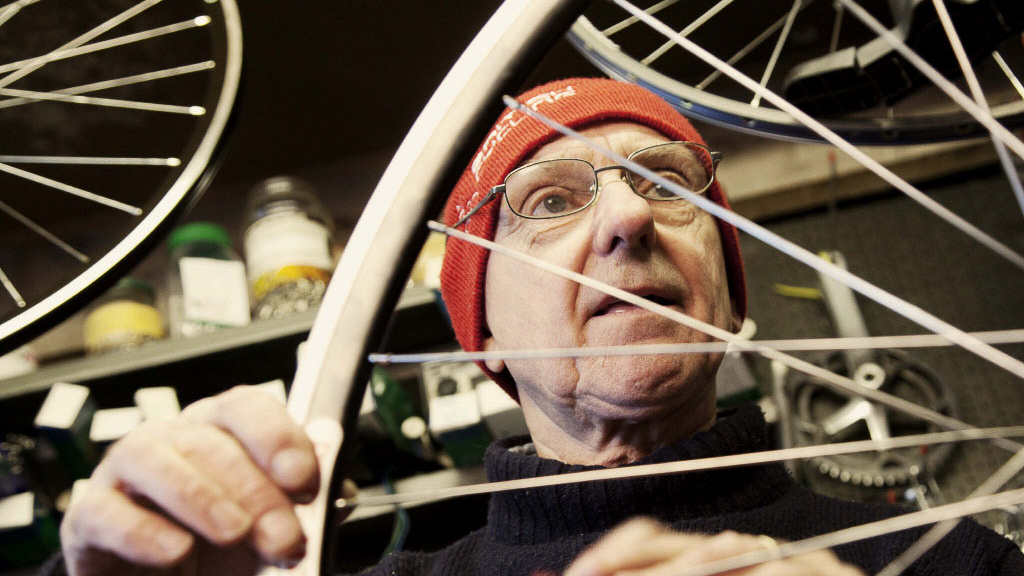 How does your wheel building service work. Is there a set range to choose from?
It’s totally bespoke. I take height and weight into consideration and also what tyres are to be used and we then have a chat about what the wheels are going to be used for: touring; TT; road racing; general training; hill climb; track; whatever. Age is a factor as well. I advise from there. Lee and I do bladed spokes, 16-32 spoke wheels, different colours. We still use Royce hubs and, with the fashion for black hubs these days, plenty of people seem to like the shiny Royce hubs better. We also have some carbon frames coming out of Italy now under my Pianni label, which can be built up with wheels to match. We are looking at making titanium frames in the future as well.
So can we have a pair of those nice blue rims with Royce hubs 18/24 for free?
No. But you can have a free cup of tea.
How does your wheel building service work. Is there a set range to choose from?
It’s totally bespoke. I take height and weight into consideration and also what tyres are to be used and we then have a chat about what the wheels are going to be used for: touring; TT; road racing; general training; hill climb; track; whatever. Age is a factor as well. I advise from there. Lee and I do bladed spokes, 16-32 spoke wheels, different colours. We still use Royce hubs and, with the fashion for black hubs these days, plenty of people seem to like the shiny Royce hubs better. We also have some carbon frames coming out of Italy now under my Pianni label, which can be built up with wheels to match. We are looking at making titanium frames in the future as well.
So can we have a pair of those nice blue rims with Royce hubs 18/24 for free?
No. But you can have a free cup of tea.
Pete and Lee Matthews can be reached at 0151 924 9311. Prices and wheels can be found at www.petematthews.com
